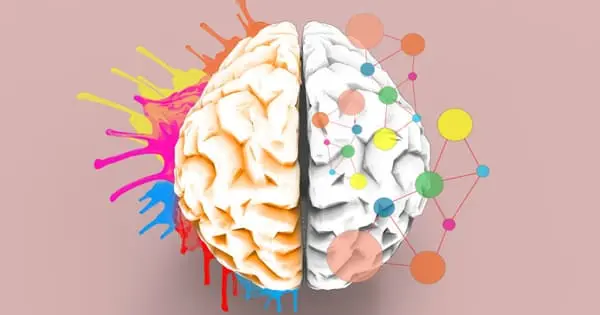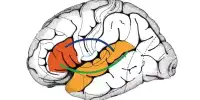Humans use their imaginations a lot, whether it’s thinking about what to make for dinner later tonight or imagining what someone on the other side of the world might be feeling after reading the news. Imagining a situation becomes more difficult as it becomes further removed from reality and more distal. Many biases are known to be caused by distal imagination limits, such as empathy gaps for people who are different from us and difficulty saving money for a future that feels very far away. However, new research from a joint study led by Dartmouth College and Princeton University researchers suggests that creativity may help us overcome these barriers to distal imagination.
The findings show that people with creative skills are better at imagining distant experiences than people with otherwise similar demographics (age, education level, etc). The study also discovered that when creative experts imagine situations far beyond the present, they activate a different neural system, which may help explain why they are better at stretching their imagination. The study’s findings have been published in the Journal of Personality and Social Psychology.
Imagining beyond the present moment, or what the researchers call “distal imagination,” is essential to our ability to consider a different space and time. It is also what allows us to empathize with others and consider other people’s perspectives.
Both creative experts and control participants achieved the same level of professional success. However, the creative experts exhibited greater distal imagination. The findings show that it is creative pursuits, not just career success, that appear to improve transcending the here and now.
Professor Mayer
The first study looked to see if there was a link between creativity and distal imagination. Approximately 300 participants were given a series of prompts spanning multiple domains (temporal, spatial, social, and hypothetical), such as “imagine what the world will be like in 500 years,” and were asked to write journal entries. They were also asked to rate how vividly they could envision the various scenarios in their heads. For creativity, the written responses were subjected to lexical analysis. Participants with higher levels of creativity performed better in distal simulation.
The second study was similar to the first, but it included a 50/50 split of nearly 200 creative and non-creative professionals. Participants in the creative expert group included writers, actors/directors, and visual artists who had received prestigious awards such as a Macarthur Fellowship, New York City Film Festival Award, Sundance Screenwriting Award, or Guggenheim Award, as well as a control group of finance, legal, and medical professionals. Participants were asked to complete a creativity test and rate how successful they thought their careers had been via an online link. The test results revealed that creative experts performed better on distal simulation measures.

“Both creative experts and control participants achieved the same level of professional success. However, the creative experts exhibited greater distal imagination. The findings show that it is creative pursuits, not just career success, that appear to improve transcending the here and now” Meyer continues.
The third study sought to ascertain what the brain does differently that enables creative experts to excel at distal simulation. Twenty-seven creative experts and control subjects were given prompts to imagine both distal and proximal situations across time, space, and social domains.
A proximal event is something that happens within the next 24 hours, whereas a distal event happens 100 years from now. The findings revealed that when imagining proximal scenarios such as what to have for breakfast tomorrow or what one’s own neighborhood looks like, the brain activity of creative experts and controls is similar. When both groups visualized proximal events, the medial prefrontal cortex was activated.
Previous research has shown that this brain region is associated with proximal thinking, which includes self-reflection. However, there was a significant difference between the two groups when it came to distal prompts. For distal events, creative experts activated a separate system, the dorsal medial system default network, which has been linked to empathy and has been linked to thinking about other people.
The findings surprised the research team, who expected creative experts to use the same neural mechanism for distal simulation as they do for proximal, but just better, when in fact they use a completely different system of the brain.
“Many of the issues confronting our society today, such as identifying solutions to climate change or working with others who may hold opposing political views, are essentially challenges that necessitate distal thinking. They require you to step outside of your current point of view and consider how things could be different from your current experience. Identifying the underlying neural mechanisms associated with this type of imagination should help us better understand the key ingredients that may be required to solve these types of complex societal problems” Meyer explains.














